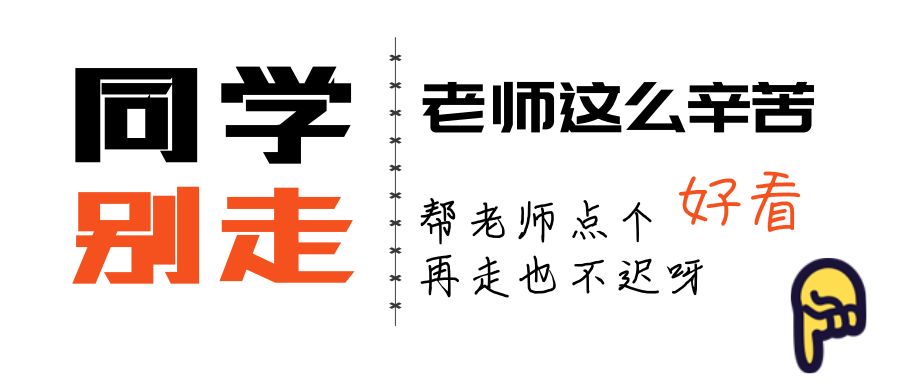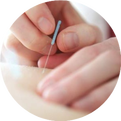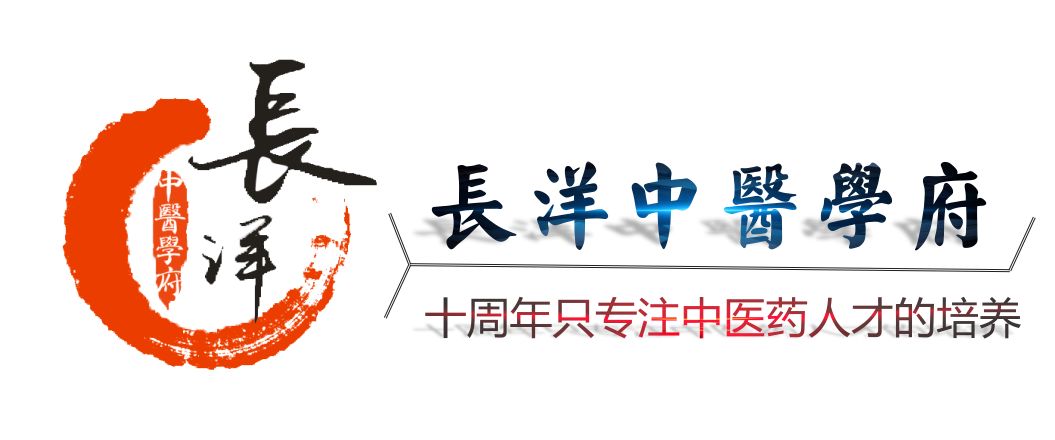
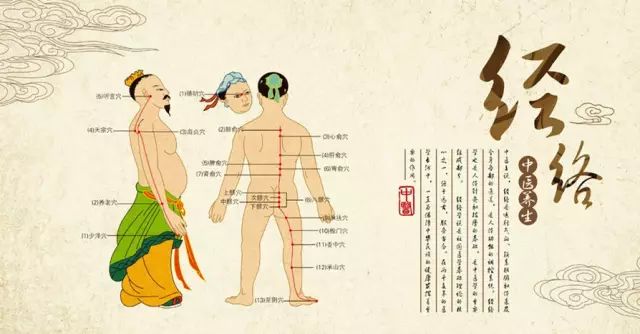
The Eight Extraordinary Meridians are a category of the body’s meridian pathways. They include the Du Mai (Governing Vessel), Ren Mai (Conception Vessel), Chong Mai (Penetrating Vessel), Dai Mai (Belt Vessel), Yang Wei Mai (Yang Linking Vessel), Yin Wei Mai (Yin Linking Vessel), Yin Qiao Mai (Yin Heel Vessel), and Yang Qiao Mai (Yang Heel Vessel). Unlike the twelve regular meridians, they do not directly connect to the organs and do not have a paired relationship, hence they are referred to as “extraordinary meridians”.What do the Eight Extraordinary Meridians include?
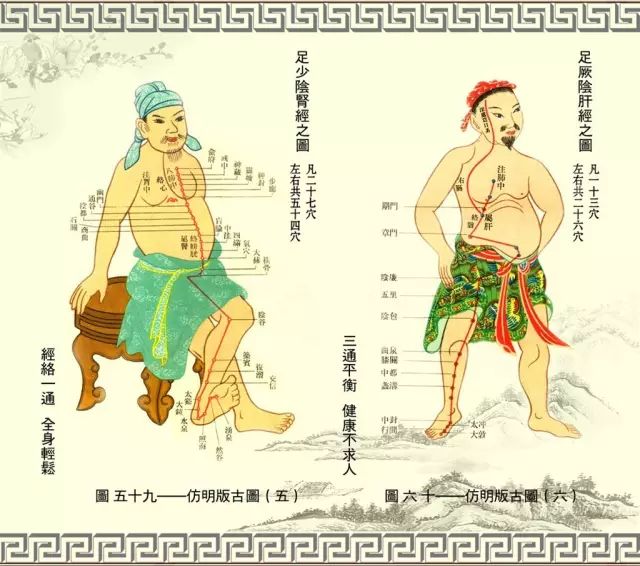
1Extraordinary Meridians
The Eight Extraordinary Meridians consist of the Ren Mai, Du Mai, Chong Mai, Dai Mai, Yin Qiao Mai, Yang Qiao Mai, Yin Wei Mai, and Yang Wei Mai. They differ from the twelve regular meridians as they do not directly connect to the organs and do not have a paired relationship; their pathways are unique, hence they are called extraordinary meridians.
Functions:
1. Facilitate the connection between the twelve meridians;
2. Regulate the accumulation and distribution of Qi and blood in the twelve meridians.
2Eight Meridians
1. Ren Mai: Runs along the midline of the abdomen, frequently intersects with the three Yin meridians of the hands and feet as well as the Yin Wei Mai, thus governing all Yin meridians in the body, hence it is called the “Sea of Yin Meridians”. The Ren Mai originates from the uterus and is related to women’s pregnancy, hence the saying “Ren governs the uterus”.
2. Du Mai: Runs along the midline of the back, frequently intersects with the three Yang meridians of the hands and feet as well as the Yang Wei Mai, thus governing all Yang meridians in the body, hence it is called the “Sea of Yang Meridians”. The Du Mai runs along the spine, ascends into the brain, and branches off to connect with the kidneys, having a close relationship with the brain, spinal cord, and kidneys.
3. Chong Mai: Ascends to the head and descends to the feet, traversing the entire body; it is the key junction for Qi and blood, capable of regulating the Qi and blood of the twelve meridians, hence it is called the “Sea of Twelve Meridians” and also referred to as the “Sea of Blood”. It is related to women’s menstruation.
4. Dai Mai: Originates from the lateral costal region, descends obliquely to the Dai Mai point, encircling the body like a belt, capable of restraining the meridians that run vertically.
5, 6. Yin Qiao Mai, Yang Qiao Mai: “Qiao” implies agility and quickness. They nourish the eyes, control the opening and closing of the eyelids, and facilitate lower limb movement.
7, 8. Yin Wei Mai, Yang Wei Mai: “Wei” implies connection. The function of the Yin Wei Mai is to “connect all Yin”, while the function of the Yang Wei Mai is to “connect all Yang”.
Physiological Functions of the Eight Extraordinary Meridians
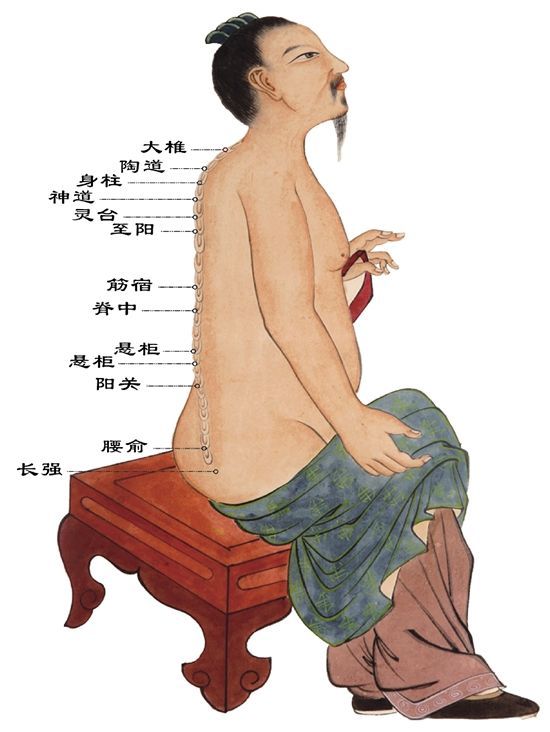
1. Further strengthen the connections between the twelve meridians: for example, the Du Mai governs all Yang meridians; the Ren Mai connects all Yin meridians; the Dai Mai restrains the vertical meridians. The Yin Qiao and Yang Qiao meridians govern the left and right Yin and Yang of the body; the Yin Wei and Yang Wei meridians connect the Yin and Yang of the exterior and interior of the body. Thus, the Eight Extraordinary Meridians further enhance the connections among various parts of the body.
2. Regulate the Qi and blood of the twelve meridians: when the Qi of the twelve meridians is abundant, it is stored in the Eight Extraordinary Meridians; when the Qi and blood of the twelve meridians are insufficient, the Eight Extraordinary Meridians can “overflow” to provide timely supplementation.
3. The Eight Extraordinary Meridians have a close relationship with the liver, kidneys, and other organs, as well as with the uterus, brain, and marrow, having certain connections in both physiological and pathological aspects.
Pathways and Physiological Functions of the Eight Extraordinary Meridians
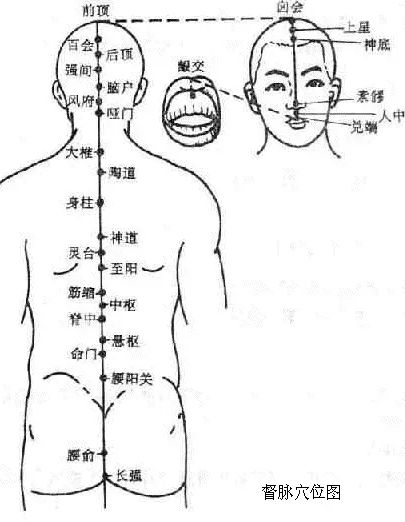
1Pathway and Physiological Functions of the Du Mai
1. Pathway: The Du Mai originates from the lower abdomen, exits at the perineum, travels posteriorly to the Changqiang point at the sacral region, ascends along the spine, passes through the nape to the Fengfu point, enters the brain, belongs to the brain, ascends along the midline of the head to the Baihui point at the top of the head, descends through the forehead to the Su Liao point at the tip of the nose, passes through the philtrum, and reaches the Ging Jiao point at the center of the upper gums.
2. Branches: The first branch, along with the Chong and Ren meridians, originates from the uterus, exits at the perineum, and at the coccyx, merges with the Kidney meridian and the Bladder meridian, traversing the spine and belonging to the kidneys. The second branch ascends directly from the lower abdomen through the navel, travels upward to the heart, reaches the throat, merges with the Chong and Ren meridians, and encircles the lips, reaching the center below the lower jaw, and then ascends to the center below the eyes. The third branch, originating from the inner canthus of the eye, ascends to the forehead, meets at the top of the head, connects with the brain, and then branches down the back of the neck, along the inner scapula, beside the spine, reaching the waist, and enters the muscles on both sides of the spine, connecting with the kidneys.
3. Physiological Functions
(1) Regulates the Qi and blood of the Yang meridians, serving as the “Sea of Yang Meridians”: The Du Mai runs along the back, which is Yang, indicating its role in commanding and supervising the Qi of all Yang meridians. Additionally, all six Yang meridians intersect with the Du Mai at the Dazhui point, indicating its regulatory function over the Yang meridians, hence the saying “governs all Yang meridians”.
(2) Reflects the functions of the brain, kidneys, and spinal cord: The Du Mai belongs to the brain and connects with the kidneys. The kidneys produce marrow, and the brain is the sea of marrow. The relationship between the Du Mai and the brain, kidneys, and spinal cord is very close.
(3) Governs reproductive functions: The Du Mai connects with the kidneys, which are associated with reproduction, hence the Du Mai is related to reproductive functions.

2Pathway and Physiological Functions of the Ren Mai
1. Pathway: The Ren Mai originates from the uterus, exits at the perineum, travels through the Yin region, ascends along the midline of the abdomen, passes through the throat (Tiantu point), reaches the inner lower lip, divides to encircle the lips, intersects with the Du Mai at the Ging Jiao point, and then ascends through the sides of the nose to the lower eye socket (Chengqi point), merging with the Yangming meridian of the foot.
2. Branches: It traverses the spine from the uterus, ascending along the back.
3. Physiological Functions
(1) Regulates the Qi and blood of the Yin meridians, serving as the “Sea of Yin Meridians”: The Ren Mai runs along the midline of the abdomen, which is Yin, indicating its role in overseeing and governing the Qi of all Yin meridians. Additionally, the three Yin meridians of the foot intersect with the Ren Mai in the lower abdomen, and the three Yin meridians of the hand connect with the Ren Mai through the three Yin meridians of the foot, thus the Ren Mai regulates the Qi and blood of the Yin meridians, hence the saying “governs all Yin”.
(2) Regulates menstruation and nourishes the fetus: The Ren Mai originates from the uterus, having the function of regulating menstruation and promoting women’s reproductive functions, hence the saying “Ren governs the uterus”.
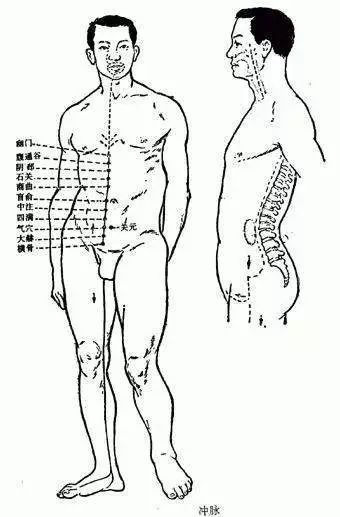
3Pathway and Physiological Functions of the Chong Mai
1. Pathway: The Chong Mai originates from the uterus, exits at the perineum, and divides into two branches. The ascending branch (the main trunk of the Chong Mai) runs along the anterior abdominal wall, near the navel (five fen from the navel), ascends, merges with the Kidney meridian, spreads in the chest, ascends through the throat, and encircles the lips; the descending branch exits the perineum and descends along the inner thigh to the space between the big toe.
2. Physiological Functions
(1) Regulates the Qi and blood of the twelve meridians: The Chong Mai ascends to the head and descends to the feet, traversing the entire body, serving as the key junction for the Qi and blood of all meridians. When the Qi and blood of the meridians and organs are abundant, the Chong Mai can store and accumulate them; when they are insufficient, the Chong Mai can provide infusion and supplementation to maintain the normal physiological activities of the body’s tissues and organs. Hence it is referred to as the “Sea of Twelve Meridians”, “Sea of Five Zang and Six Fu”, and “Sea of Blood”.
(2) Governs reproductive functions: The Chong Mai originates from the uterus, also known as the “Blood Chamber” or “Sea of Blood”. The Chong Mai has a role in regulating menstruation. It is closely related to reproductive functions; for women, “when the Chong Mai is abundant, menstruation occurs regularly, hence the presence of children”. Conversely, if the Chong Mai is deficient, it can lead to reproductive dysfunction.
(3) Regulates the ascending and descending of Qi: The Chong Mai, during its pathway, connects with the Kidney meridian, belongs to the Yangming, and connects with the Jueyin and Taiyang. The Chong Mai has the function of regulating the ascending and descending of Qi in certain organs (mainly the liver, kidneys, and stomach).
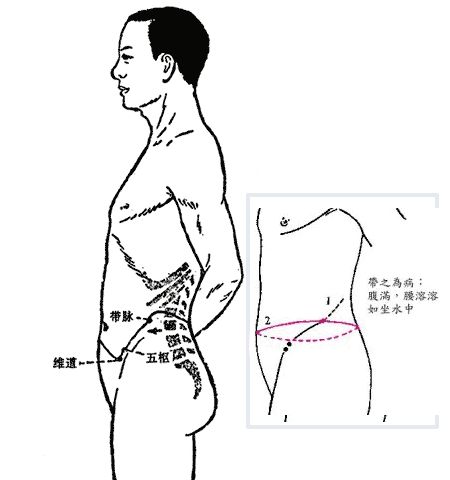
4Pathway and Physiological Functions of the Dai Mai
1. Pathway: The Dai Mai originates from the lateral costal region, descends obliquely, intersects with the Dai Mai point of the Gallbladder meridian of the foot, encircles the body, and at the Dai Mai point, descends obliquely along the upper edge of the hip bone to the lower abdomen.
2. Physiological Functions: Restrains the vertical meridians and governs women’s leukorrhea.

5Pathway and Physiological Functions of the Yin Qiao Mai
1. Pathway: The Yin Qiao Mai originates from the inner side of the heel of the foot, at the Zhaohai point of the Kidney meridian, ascends through the inner ankle, along the inner thigh to the anterior genital area, ascends along the anterior surface of the trunk to the chest, enters the throat near the Ren Mai, and reaches the side of the nose, connecting with the inner canthus of the eye, merging with the Taiyang and Yang Qiao Mai, and ascends.
2. Physiological Functions: Controls the opening and closing of the eyes and muscle movements.

6Pathway and Physiological Functions of the Yang Qiao Mai
1. Pathway: The Yang Qiao Mai originates from the outer side of the heel of the foot, at the Shenmai point of the Bladder meridian, ascends along the outer ankle, travels up the outer side of the lower limb to the abdomen, along the posterior outer side of the chest, through the shoulder, neck, and forward to the corner of the mouth, reaching the inner canthus of the eye. It merges with the Bladder meridian and the Yin Qiao Mai, then ascends along the Bladder meridian to meet the Shaoyang meridian at the Fengchi point behind the neck.
2. Physiological Functions: Controls the opening and closing of the eyes and muscle movements.
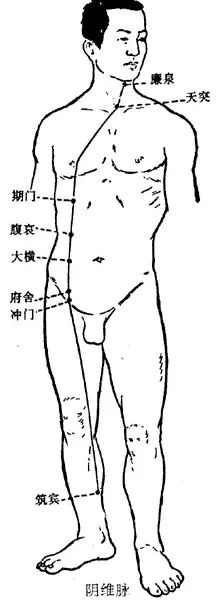
7Pathway and Physiological Functions of the Yin Wei Mai
1. Pathway: The Yin Wei Mai originates from the five cun above the inner ankle of the foot at the Zhubin point of the Kidney meridian, ascends along the inner side of the lower limb, reaches the abdomen, travels alongside the Spleen meridian of the foot to the lateral costal region, connects with the Liver meridian of the foot, ascends to intersect with the Ren Mai at the Tiantu point, and terminates at the Lianquan point in the throat.
2. Physiological Functions: The term “Wei” implies connection and binding. The Yin Wei Mai has the function of connecting the Yin meridians.

8Pathway and Physiological Functions of the Yang Wei Mai
1. Pathway: The Yang Wei Mai originates from the Jinmen point of the Bladder meridian, passes over the outer ankle, ascends alongside the Shaoyang meridian, travels up the outer side of the lower limb, through the posterior outer side of the trunk, from the axilla to the shoulder, neck, and forward to the forehead, distributing to the side of the head and the back of the neck, merging with the Du Mai.
2. Physiological Functions: Connects the Yang meridians.
Click to view Changyang Traditional Medicine Academy “Zero-Basis TCM Entrepreneurship Class”
Changyang Traditional Medicine Academy “Zero-Basis TCM Entrepreneurship Class”

